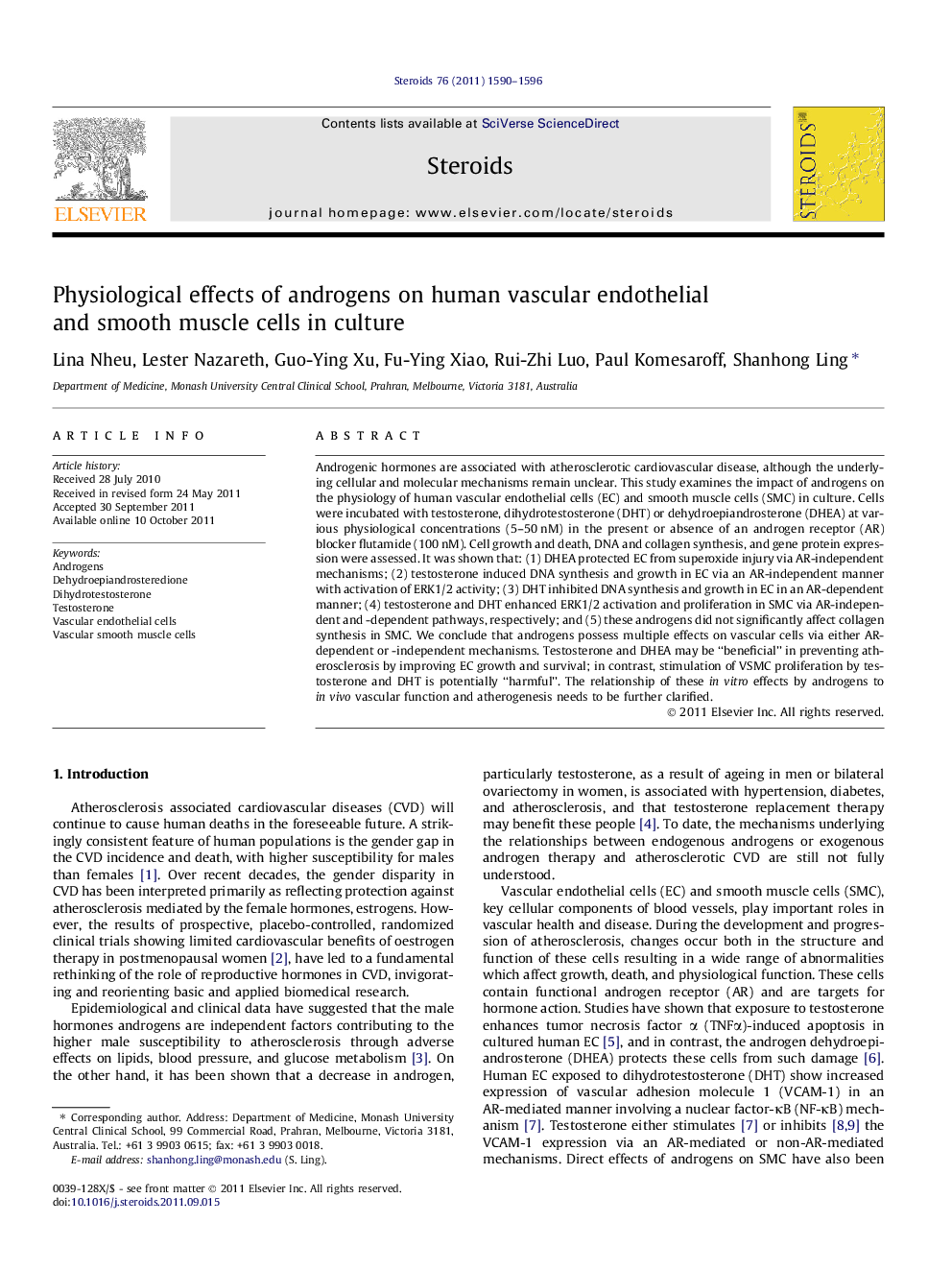| Article ID | Journal | Published Year | Pages | File Type |
|---|---|---|---|---|
| 2028313 | Steroids | 2011 | 7 Pages |
Androgenic hormones are associated with atherosclerotic cardiovascular disease, although the underlying cellular and molecular mechanisms remain unclear. This study examines the impact of androgens on the physiology of human vascular endothelial cells (EC) and smooth muscle cells (SMC) in culture. Cells were incubated with testosterone, dihydrotestosterone (DHT) or dehydroepiandrosterone (DHEA) at various physiological concentrations (5–50 nM) in the present or absence of an androgen receptor (AR) blocker flutamide (100 nM). Cell growth and death, DNA and collagen synthesis, and gene protein expression were assessed. It was shown that: (1) DHEA protected EC from superoxide injury via AR-independent mechanisms; (2) testosterone induced DNA synthesis and growth in EC via an AR-independent manner with activation of ERK1/2 activity; (3) DHT inhibited DNA synthesis and growth in EC in an AR-dependent manner; (4) testosterone and DHT enhanced ERK1/2 activation and proliferation in SMC via AR-independent and -dependent pathways, respectively; and (5) these androgens did not significantly affect collagen synthesis in SMC. We conclude that androgens possess multiple effects on vascular cells via either AR-dependent or -independent mechanisms. Testosterone and DHEA may be “beneficial” in preventing atherosclerosis by improving EC growth and survival; in contrast, stimulation of VSMC proliferation by testosterone and DHT is potentially “harmful”. The relationship of these in vitro effects by androgens to in vivo vascular function and atherogenesis needs to be further clarified.
► We examine the effect of androgens on human vascular cells in culture. ► Dehydroepiandrosterone protects endothelial cells (EC) from superoxide injury. ► Testosterone enhances ERK activation and growth in EC and smooth muscle cells (SMC). ► The testosterone actions are independent on the classical androgen receptor (AR). ► Dihydrotestosterone inhibits EC but stimulates SMC growth via AR mediation.
